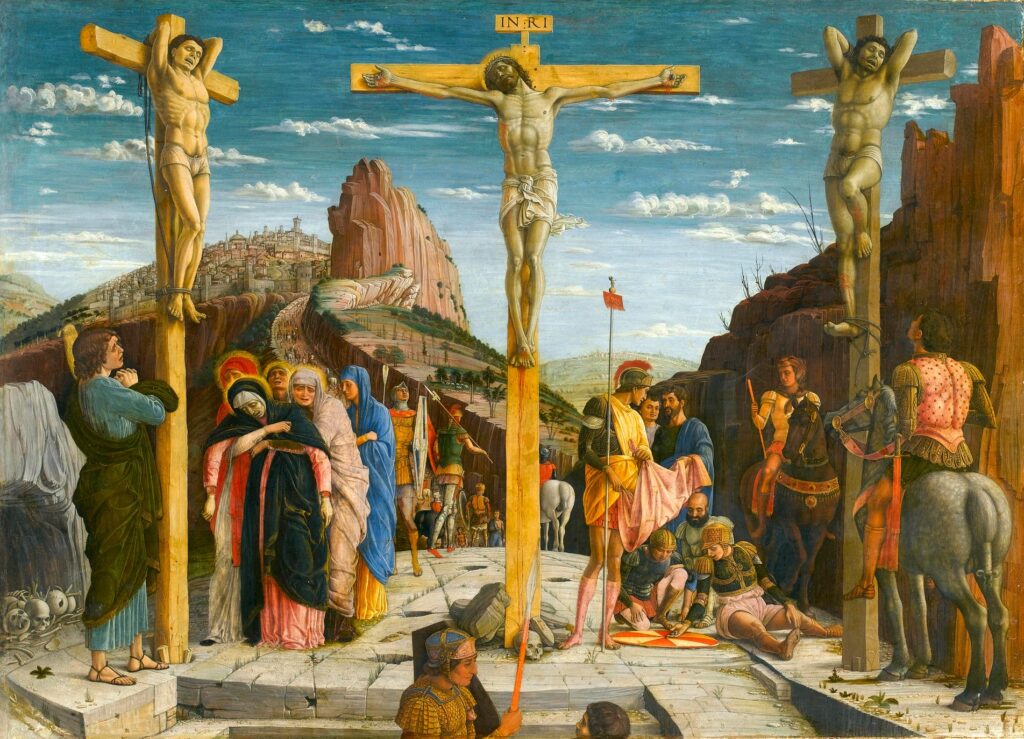
In this small panel, the crucifixion is shown against a beautiful landscape near a bridge built where a river bends. It might well be somewhere in the Veneto. The bridge and the tracks made by people across the river plain draw the eye into the distant hills and countryside, and to the horizon beyond. Bellini captures the play of light on the water beautifully. This backdrop is in contrast to the stark scene in the foreground. The immense sorrow of both the Virgin and the Evangelist is visible in there expressions and in their poses. At the centre Christ hangs on the cross. The wound in his side tells us that he has died. From this small detail -just a stroke of blood red paint- we understand that the bird-like flock of angels in the sky behind the cross are hovering in lamentation. They echo the sorrow of the two figures below them. What is most striking about the painting is the great contrast between the background and the foreground. They might be two entirely different scenes. Although there are soldiers in the background, and they are surely the ones who crucified Christ, their poses are quite relaxed and casual. Near the centre, and to the left of Christ’s feet, three of them are chatting. On the far right, another leans against a grassy bank as if in conversation with the small figure in red. There is a similar pair further back on the left. All of these seem to be enjoying the afternoon sunshine. Their indifference to the suffering we see in the foreground is startling. I am reminded again of Auden’s poem “Musée des Beaux Arts” and his words about “the human position” of suffering.
It is likely that in this composition the young Bellini drew on a sketch by his mentor, Jacopo Bellini. He would have been familiar with the use of landscape in such a scene among northern artists. But whilst Bellini sits within established conventions for such a scene, in this panel he makes his own unique statement. This picture might be contrasted with a crucifixion scene of perhaps a few years earlier by his brother-in-law Mantegna painted for the Predella of his San Zeno Altarpiece and now at the Louvre:

In both the cross is wedged into a stone pavement, but there the similarity ends. In Bellini’s painting the soldiers have moved on from their deed. We do not see the city or its walls or a great crowd of people as we do in Mantegna’s work. Bellini emphasises the sense of suffering in isolation against a backdrop of a beautiful, but indifferent, world. The only element which unites the crucifixion scene in the foreground with the landscape in the background is the play of light which is as pale and subtle on the cool waters of the river as it is on the pale skin of Christ’s body. Tomorrow we celebrate the Feast of the Exaltation of the Cross. In my view Bellini’s paintings should give us food for thought and prayer.
The Catholic Chaplaincy serves the students and staff of the University of Edinburgh, Edinburgh Napier University and Queen Margaret University.
The Catholic Chaplaincy is also a parish of the Archdiocese of St Andrews and Edinburgh (the Parish of St Albert the Great) and all Catholic students and staff are automatically members of this parish.